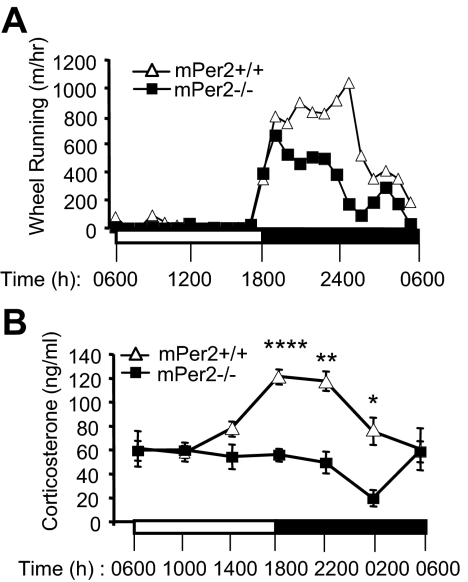Figure 1.
Diurnal rhythm of activity and corticosterone rhythm are attenuated in mPer2−/− mice. A, Locomotor activity during light period (0600–1800 h) and dark period (1800–0600 h) was monitored with wheel running activity (n = 4 per genotype). Five-month-old mPer2+/+ (open symbols) and mPer2−/− (closed symbols) mice were tested. Light and dark periods are indicated by white and black bars, respectively. B, Serum corticosterone levels in LD. Blood was collected from the tail vein with care to minimize the stress level. Results are mean ± sem. Statistical analysis was performed using GLM (see Materials and Methods). For corticosterone level, the overall F test is significant (F = 8.06; P < 0.0001), indicating strong evidence that the mean corticosterone levels for the 12 cells are different. Both time and genotype have significant effects on corticosterone level (F = 5.9, P < 0.0001 for time; and F = 34.17, P < 0.0001 for genotype). The significant interaction between time and genotype (F = 5; P = 0.0003) shows that the genotype effect depends also on time, i.e. differences between genotypes differ significantly across times. Comparison of corticosterone levels between genotypes using the F test performed at each specific time point further demonstrates that the significant differences occur during dark period: F = 19.98, P < 0.0001 (****) for 1800 h; F = 11.87, P = 0.0029 (**) for 2200 h; and F = 7.92, P = 0.013 (*) for 0200 h. Detailed information on the statistical analysis and the number of mice used is in supplemental Table 1.

